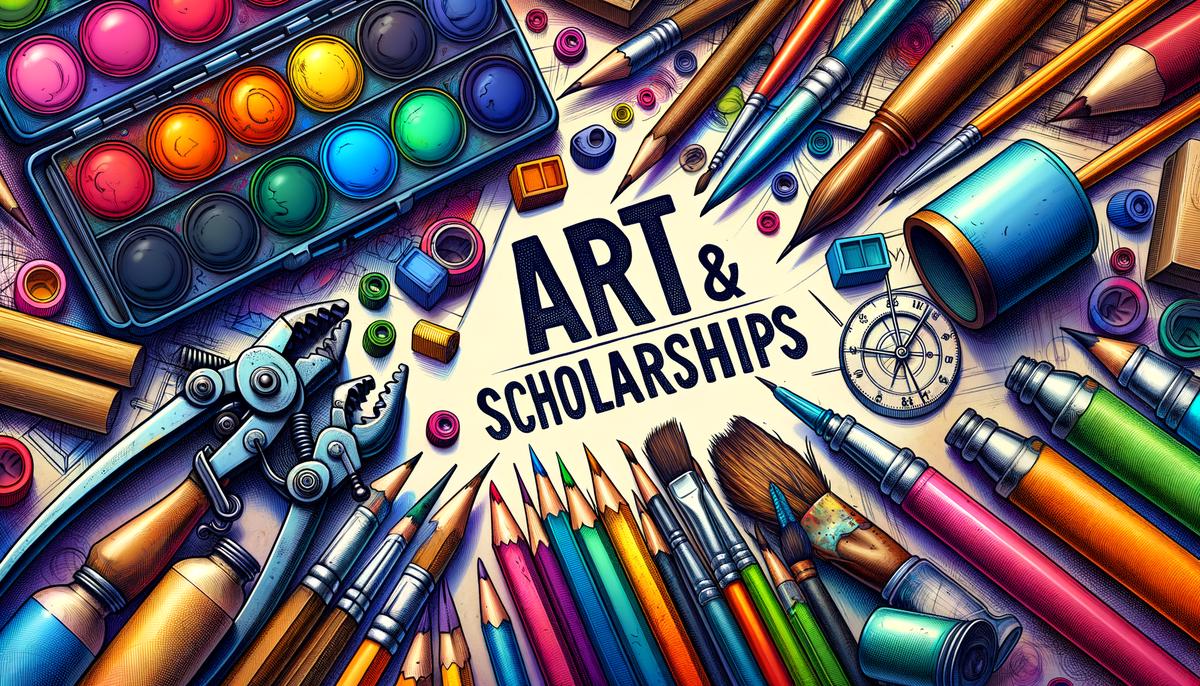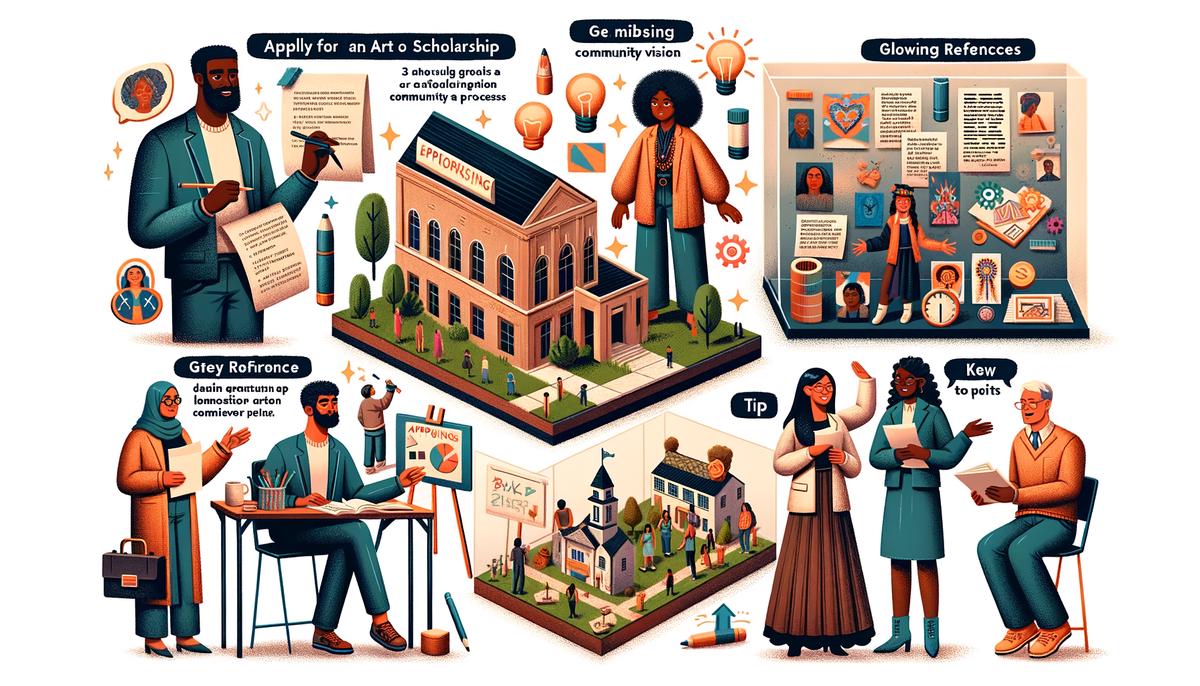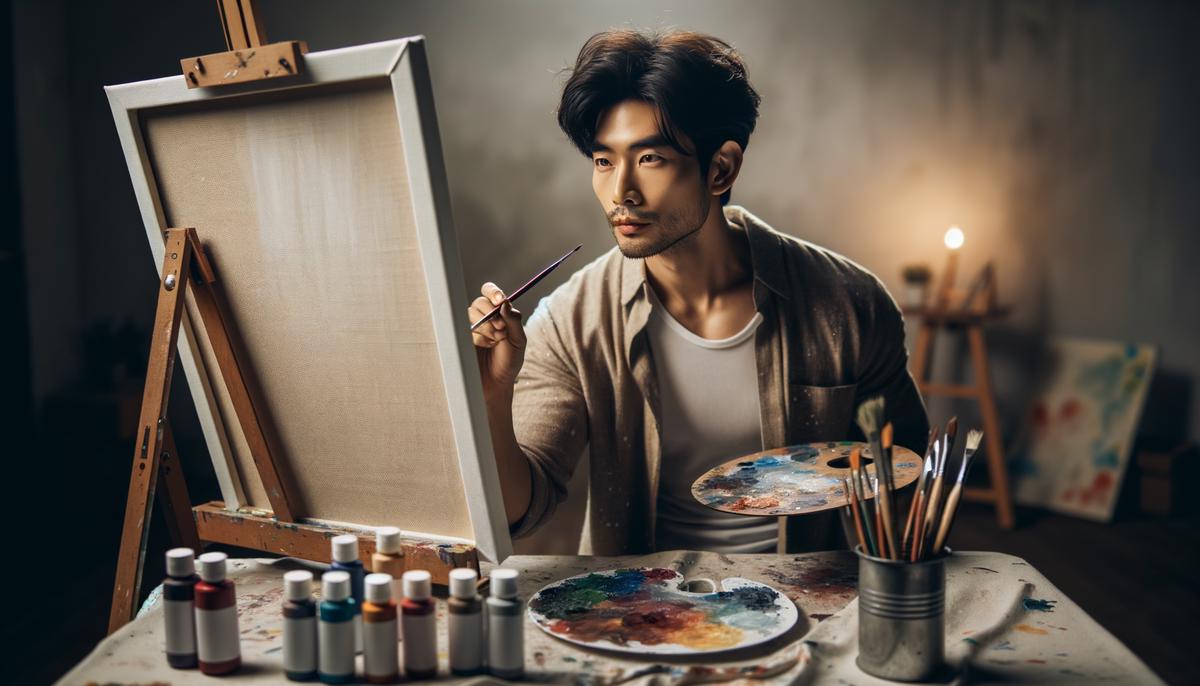Are you an artist looking to take your passion to the next level with some extra funding? You’ve come to the right place. Whether it’s furthering your education or bringing a dream project to life, art grants and scholarships can play a crucial role. This guide will walk you through the steps to uncover these financial gems, providing you with the know-how to give your art the spotlight it deserves. With a strategic approach, finding the right support is not only possible but within your grasp.
Researching Grants and Scholarships
How to Find the Right Art Grants and Scholarships
You’re passionate about your art and looking to further your education or put on that exhibition you’ve always dreamed of. But let’s face it, money doesn’t grow on door frames or canvases. This is where art grants and scholarships come into play, offering you the financial boost you need. Don’t know where to start? No problem! Here’s a step-by-step guide to finding those elusive funding opportunities that seem as rare as a perfectly symmetrical human face in a Picasso painting.
- Understand Your Needs and Goals
- Research, Research, Research
- Make Your Art Portfolio Stand Out
- Tailor Your Applications
- Deadlines Are Your Friend (No, Really)
- Follow Instructions to the Letter
- Keep the Faith and Keep Applying
First off, get clear on what you’re looking for. Are you after a scholarship to help with tuition for art school? Or maybe a grant to fund a project? Your specific needs will guide where you look and what you apply for. Just like in art, starting with a clear vision leads to the best outcome.
The internet is your treasure map. Websites like CollegeScholarships.org, Fastweb, and the College Board offer extensive lists of scholarships and grants for artists just like you. But don’t stop there! Local art councils, community centers, and art organizations often have opportunities tucked away, waiting to be discovered.
Whether it’s scholarships or grants you’re after, a killer art portfolio is your golden ticket. Showcase your best work, the pieces that truly represent your skills and artistic voice. Think of it as a visual pitch of why you deserve the funding. Blow their minds with your creativity and technical skills – this is no time for modesty.
Imagine you’re creating a piece of art specifically for a certain audience. That’s how you should approach your applications. Tailor them to fit the specific grant or scholarship. Highlight aspects of your work and aspirations that resonate with the organization’s mission. Personalization can make your application pop off the page like a 3D sculpture.
Keeping track of deadlines is as crucial as remembering to clean your brushes. Set up a system, whether it’s alerts on your phone or a giant wall calendar. Missing a deadline is like painting over a masterpiece – a total waste of your talent and efforts.
If they ask for a video submission, don’t send a slideshow. If they want a 500-word essay, don’t pen a novel. Following application instructions is like following a complex recipe – do it right, and you’ll end up with a delicious result. Screw it up, and well, it’s back to the drawing board.
Rejection is part of the artist’s journey, but so is resilience. If you don’t get the first grant or scholarship you apply for, don’t throw down your paintbrush in defeat. Keep applying. Each application is a step towards mastering the art of pitching your art. Remember, every renowned artist faced rejection before their breakthrough.
Finding the right art grants and scholarships is a mix of research, showcasing your talent, and persistence. With a strategic approach and a dash of resilience, financial support for your art education or next project is within reach. Keep creating, keep applying, and let your art shine brighter than a freshly cleaned palette.

Crafting Your Application
Applying for an art grant or scholarship? Nice move! Now let’s dive into how you can make your application pop and sparkle more than a fresh canvas under the morning sun.
Show Your Unique Voice and Vision
Alright, your art speaks for itself, but can you? Your application needs to scream “This is who I am! This is what I stand for!” Grab that chance to share your story. How did you stumble into the world of art? What compels you to create? Let your passion leap off the page. Remember, committees sift through loads of applications; your unique voice and vision could be the magnet that draws their eyes to yours.
Detail Your Artistic Process
This is no secret – the magic is not just in the final piece but in the journey you took to create it. Dazzle them with insights into your creative process. What tickles your imagination? Is your artwork the result of meticulous planning, or do you dive straight into the creative abyss and fly by the seat of your pants? This glimpse into your artistic method adds depth to your application, making it more memorable.
Community Engagement and Future Plans
Here’s where you tie your love for art with the big, beautiful world. How does your art engage with the community or address bigger conversations happening in society? And don’t stop there. Share your grand schemes – how will this grant or scholarship propel you towards your artistic and career goals? Make them see that by investing in you, they’re contributing to a larger picture.
Gather Glowing References
Think about who knows your art and work ethic best. Now, go ask them for references. These should be from people who can vouch for both your talent and your tenacity. Whether it’s a mentor, art professor, or the leader of an art community you’re involved in, their words can add weight to your application, giving it that extra oomph!
Presentation is Key
Last but definitely not least, how you present your application can make a world of difference. If submitting physical items, ensure they’re neat and professional. Online submissions should follow the specified formats to a T. Think of it this way, if your application were an art piece, you’d want it to be gallery-ready, right?
Boom! There you have it. Stand out in a sea of applications by letting your unique voice and vision shine, detailing your artistic journey, engaging with the community, securing strong references, and presenting everything with polish. Remember, it’s not just about showing why you deserve the grant or scholarship, but how your art can leave a mark. Ready to knock their socks off? Go for it!

Preparing a Winning Portfolio
Creating an Art Portfolio That Wows the Judges: A Step-By-Step Guide
Getting ready to showcase your art to the world through scholarships, grants, or exhibitions? You’ve got the talent and the ambition, but now it’s time to compile an art portfolio that turns heads and captivates judges. Follow these steps, keep it real, and let’s get your art the spotlight it deserves!
- Curate Your Best Works
- High-Quality Images
- Add a Personal Statement or Artist Bio
- Include a CV or Resume
- Label Your Work Clearly
- Preparing for Digital Submissions
- Feedback Is Gold
- Double-Check and Submit
Quality trumps quantity every time. Select 10 to 20 pieces that best represent your skills, techniques, and artistic journey. Make sure each piece aligns with the theme or requirements of the scholarship, grant, or exhibition you’re applying to. Show a range of abilities or focus on a particular style that defines you as an artist. Remember, this portfolio is your visual voice!
Snap crisp, clear photos of your artwork. Natural light is your best friend here, avoiding any glare or shadows that might hide the details of your work. If you’re handy with a camera, great. If not, consider hiring a professional photographer who specializes in capturing artwork. These images are often the only thing judges will see, so make them count!
Here’s your chance to tell your story. Why do you create? What inspires you? How do you hope your work impacts others? Keep it succinct, honest, and from the heart. This personal touch can set you apart and give judges insight into the person behind the canvas.
While this may sound more corporate than creative, including a CV or resume highlights your artistic achievements, exhibitions, workshops, or any art-related experience. It doesn’t need to be long, but it should be up-to-date and professional. Tailor it a bit to lean into the opportunity you’re aiming for.
Each piece in your portfolio should come with a title, size, medium, and the year it was created. This not only shows professionalism but also helps judges understand the context and framework of your work. If there’s a fascinating story behind a piece, consider adding a brief description—just enough to pique interest without overwhelming.
Many applications are digital, so ensure your files are clearly named (think “LastName_Title.jpg”) and meet any specific formatting requirements (size, resolution, etc.). Organizing your work in a logical order in a single PDF can also provide a smooth viewing experience for judges.
Before you finalize everything, gather feedback from trusted mentors, fellow artists, or art teachers. Fresh eyes might catch something you’ve overlooked and provide valuable insights on how to polish your portfolio further. This feedback can be the difference between good and great.
Ensure you’ve followed all guidelines and met all requirements for your submission. Missing a minor detail could mean disqualification. Once you’ve triple-checked everything, send off your portfolio with confidence and a hopeful heart.
Remember, crafting an art portfolio isn’t just about showcasing your creativity and skill—it’s about telling a story, your story. Let judges see not just what you create, but why you create. Good luck, and here’s to your art finding new audiences and appreciation!

Securing art grants and scholarships might seem daunting, but it’s all about showcasing who you are and the incredible work you do. Each step you take, from refining your goals to submitting a polished portfolio, gets you closer to turning your artistic dreams into reality. Remember, the world needs your art, and with the right effort and persistence, financial support can be part of your artistic career. So, keep your passion burning, your creativity flowing, and let this guide be your beacon towards achieving your art aspirations.























